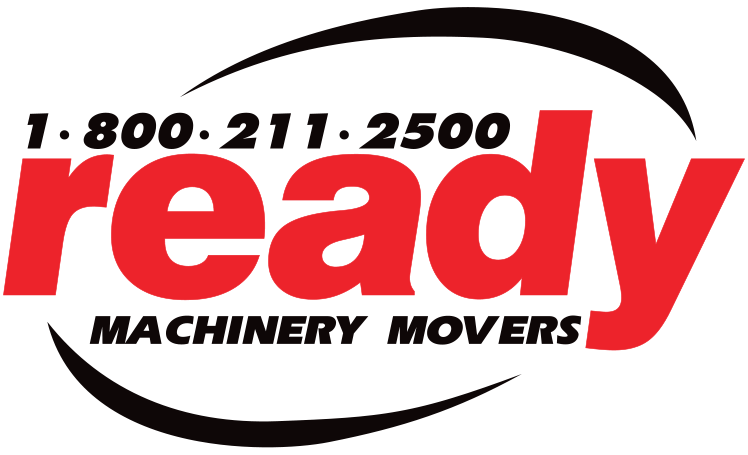Heavy equipment and machinery are the backbone of every industry. These valuable pieces of equipment are used for every plant’s daily operation. Since they perform demanding labour every day, this type of machinery requires regularly scheduled, preventive maintenance to ensure optimal performance. Prevent expensive downtime by creating a proactive maintenance schedule. Detect potential mechanical issues and make repairs before you end up with a costly problem. Read some must-do maintenance tips here:
Machine safety is an important factor to prevent accidents.
- Enact Preventative Maintenance – This type of maintenance is significantly different from regular maintenance (lubrication, oil and filter change). It helps anticipate future wear and tear and changes to mechanical parts. Preventative measures allow you to take corrective actions to ensure top performance and reliability.
Get the highest return on investment with a preventive maintenance plan that includes:
-> Regular systematic inspection
-> Modification and replacement of components
-> Performance testing and analysis
By committing to a preventive maintenance plan, you successfully extend the lifespan of machines. Reduce the potential of costly downtime caused by sudden breakdown. Additional benefits:
-> Better inventory management of mechanical parts
-> Increased resale value
-> Reduced need to replace expensive components
This is an all-inclusive approach to equipment management. By taking necessary, you protect the safety and health of workers — and the environment.
- Determine Major Causes of Breakdown – An effective preventive maintenance plan identifies potential causes of machinery breakdown. Preventing the possible causes of failure helps save hundreds or thousands of dollars while maintaining machinery performance and workflow.
Below are the common types and causes of machine failure:
-> Sudden – A machine breaks down without warning. This is often due to defective parts that needed to repair or replacement.
-> Intermittent – This type of failure occurs randomly or sporadically. Determining the cause of the problem may not be simple. If the issue is left unaddressed, it can result in expensive downtime and repair. Prevent intermittent failure by anticipating possible problems and resolving them during maintenance.
-> Gradual – Damaged components become more evident at the end of a machine’s lifespan. Plan for this inevitability, be fully prepared, and replace worn parts before failure occurs.
-> Thermally-Induced – Drastic fluctuations in temperature can also be a cause for equipment breakdowns. This usually occurs when starting machines in cold weather. Additionally, overheating can cause thermal failure.
-> Mechanically-Induced – This is the easiest type of equipment failure to recognize. Regular maintenance, replacement of damaged parts, lubricating bearings, tightening fasteners, and properly aligning moving parts can prevent such a situation. The common causes of mechanical failure include overuse, overexertion, shock, collision, and vibration.
-> Erratic – Probably the most difficult type of defect to predict, erratic failure can happen randomly and under varying conditions. It is often the result of a sudden overload of electrical or hydraulic systems. However, software and/or hardware malfunctions can be prevented using diagnostic tools during regular equipment maintenance.

Here are more tips to keep your machinery in top condition:
- Know the Product – When it comes to maintenance, knowing the machine inside and out is crucial. All the information you need is usually available in the machine’s equipment manual. Reading and understanding the manual must be the core principle of your maintenance plan. It includes:
– common service issues
– troubleshooting information
– component service intervals
– recommended servicing products
– acceptable operating conditions
Manuals often provide bullet-point lists or flow charts so you can easily follow steps and techniques to handle malfunctions.
- Don’t Overwork Your Machines – Avoid exceeding the performance specifications and limitations of the machine (as stated in the operator manual). Knowing and following established limits is key to optimal performance and having machinery working effectively and efficiently. Today, many pieces of equipment are programmed with multiple power modes. Set each to the correct setting for a specific task at hand. Additionally, extend the life of your property by reducing idle time.
- Document the Service History – Keeping a detailed service record for each machine enables you to understand its history. Knowing the exact date, type of service performed, replaced parts, next service scheduled, and any observed irregularities allows you to plan for future repairs and replacements.
A detailed maintenance record is documented proof that your machine is being maintained according to the manufacturer’s recommendations. It is also an essential document to support warranty claims, particularly if there is a dispute alleging mechanical failure caused by negligence.
Document your maintenance with:
– paper ledger
– spreadsheet stored as a computer file
– small booklets placed on the machine
– whiteboards on office walls
- Inspect Machine Components – Fluids and the electrical system are among the most important components that require regular checkup and maintenance. Know what needs to be inspected — and when.
-> Fluid Level – Inspect oil, engine coolant, and transmission oil levels. Refill immediately when fluid is lower than its optimum level. Also, check equipment for any signs of leaking.
-> Oil Filter – Filters need to be replaced regularly. Dirty oil filters can affect machine performance.
-> Belts and Hoses – Check belts for signs of undue wear. Also, inspect the tightness of the belt on pulleys. Prevent damage to both components by ensuring the belt doesn’t pull too hard. Hoses must also be checked for wear and leaks.
- Add and Test Lubricants – Lubricants help minimize friction between moving parts. Committing to a regular lubrication schedule can add longevity to your machinery and prevents premature wear of components. Checking lubricant levels frequently also gives you the ability to diagnose potential problems. Check for signs of grease buildup on pistons, and leaks around oil seals. Use the lubricant as prescribed in the operator’s manual.
Regular care and preventive maintenance should be top priorities to keep your equipment healthy and in good condition. When you need to relocate machinery for a plant move or other reason, hire a professional company specializing in moving and transporting heavy equipment. Don’t risk damage or safety by moving “on the cheap.”
Ready Machinery Movers has the crew and tools to safely transport and set up your machines at your new location. We employ experienced, highly trained industrial equipment movers and millwrights who can assist with maintenance and repair of heavy equipment and machinery, making us an industry leader in machinery moving throughout Canada and North America. Call 1-800-211-2500 to request a quote.
